A powerful sedative approved for use as a tranquilizer by Food and Drug Administration has been identified as a new threat in the sale of illegal drugs in America. It’s not one taken by itself, though. The drug called xylazine, referred to as “tranq”, is being added to fentanyl and the combination of the two has created the “deadliest drug threat” in the U.S. according to a DEA public safety alert. In this blog post, we’ll answer the question of what is xylazine, explain what signs to look for in someone you know who may be using xylazine, and tell you how to find help right now.
If you or a loved one need help, call our admissions team today at 561-841-1033.What is Xylazine?
“Xylazine is a drug that has been used as a large animal tranquilizer for many decades. For many decades, we have known it should never be put in the human body because of how powerfully it acts to depress respiratory and circulatory systems. It is heart-stopping and breath-taking in the worst possible way. Opioids can also have these effects, but, if caught in time, they can often be reversed with medicines commonly carried by first responders and even many people on the street. Unfortunately, Xylazine does not respond to these medications, rendering them useless. Xylazine use in humans can also cause unexplained wounds that are hard to treat and can appear on the body even where there has been no injury. The CDC recommends a multi-faceted approach to try to curb the tide of Xylazine use and death. It includes increased access to testing so that Xylazine can be identified and addressed, promoting education of the public and health professionals, efforts to control distribution, and, most importantly, evidence-based prevention and treatment efforts.” Dr. John Dyben, DHSc, MCAP, CMHP, Chief Clinical Officer of Hanley
The animal tranquilizer Xylazine is increasingly being used as a synthetic cutting agent for opiates such as heroin and fentanyl. The drug’s use is expanding at an exponential rate, and showing up in drug overdoses. Xylazine is rarely found on its own. Instead, it is commonly added to fentanyl and other drugs when they’re manufactured for illegal distribution and use. Xylazine is added to extend the effects of the short-acting fentanyl. When the two are combined, significant adverse effects and results, including death, can occur. If you believe someone you know is abusing xylazine-laced substances, encourage them to get help for their substance use.
Xylazine or “Tranq”
Xylazine is a non-opioid that is used in animals as a sedative, anesthetic, muscle relaxant, and analgesic. It is not approved for human use by the FDA because of the significant central nervous system effects. When coupled with heroin or fentanyl, it is known as “tranq” or “tranq dope.” When sold on the street, xylazine is added to other drugs, including fentanyl, as a cutting agent to extend the effects of that drug and allow manufacturers to produce higher quantities and extend their drug supplies. Xylazine is available in liquid injectable dosages of 20 mg/mL, 100 mg/mL, and 300 mg/mL for veterinary use. The liquid solution might be salted or powdered. As an illicit drug, it might appear as a white or brown powder and can be difficult to recognize just on appearance since it can be combined with other powders or crushed into tablets. Xylazine can be administered intravenously, intramuscularly, intranasally, or orally. Because of its rapid onset, it can effect a person within minutes, and xylazine can last 8 hours or more depending on the amount, how it was taken, and whether it was coupled with an opioid or other drug(s).
Signs and Symptoms of Xylazine Use
Signs and symptoms of xylazine use come from changes to physical appearance, behavior changes, and more. Since xylazine is a central nervous system depressant, you may see signs of drowsiness, amnesia, slow breathing, lowered heart rate, and dangerously low blood pressure in people who have used it. If someone you know has taken high doses, they may lose their physical sensation, lose consciousness, or feel the use of other drugs with more intensity. Use may cause skin and soft tissue wounds, including ulcerations. You may see tissue damage and severe abscesses in sites where the drug was snorted or injected. Wounds may also appear away from injection sites, including the arms and legs, and the condition of these wounds may worsen more quickly.
Dangers from Using Xylazine
The dangers of taking a drug with xylazine in it are significant. As a sedative, it can lead to unconsciousness, especially at higher doses. This could result in blacking out and being vulnerable to injury, sexual assault, or even death. Also, the sedative effects of xylazine also enhance the danger of overdose. Worse, because it is not an opioid, naloxone use for that drug’s overdoses does not work on xylazine. If taken with fentanyl, naloxone can be administered following an overdose.
Where to Get Help for Xylazine and Fentanyl Abuse
Withdrawal from xylazine may produce anxiety, irritability, restlessness, and severe hypertension. More commonly, withdrawal from the combination of xylazine and an opioid will show up in withdrawal symptoms including anxiety, muscle pain, diarrhea, vomiting, or nausea, restlessness or sweating, and dilated pupils or watery eyes. If you’re seeing these signs in someone you love, encourage them to get treatment.
Hanley provides a holistic and comprehensive treatment program for anyone with a history of opioid misuse or abuse of multiple drugs. Our facilities offer a medical detox to allow your loved one to move through the withdrawal process safely and comfortably. A personalized treatment plan can be created based on their particular needs, and evidence-based interventions can help them get on the road to recovery. These methods may include Cognitive Behavioral Therapy (CBT) to help your loved one identify and modify dysfunctional thoughts and behaviors related to drug use with a goal of developing coping skills, managing triggers, and preventing relapse. Individual counseling and group therapy are fundamental elements of a program, and setting up your loved one for long-term success begins with planning for continuing care before the current treatment program ends.
Hanley Center is a well-known care provider offering a range of treatment programs targeting the recovery from substance use, mental health issues, and beyond. Our primary mission is to provide a clear path to a life of healing and restoration. We offer renowned clinical care for mental illnesses and have the compassion and professional expertise to guide you toward lasting wellness. For information on our programs, call us today: 561-841-1033.




